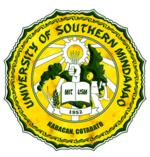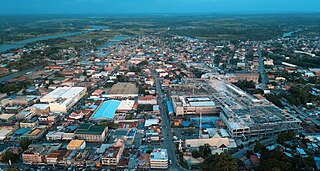
Cotabato City, officially the City of Cotabato, is a first class independent component city in the Bangsamoro Autonomous Region in Muslim Mindanao, Philippines. According to the 2020 census, it has a population of 325,079 people, making it as the most populated city under the independent component city status.

Digos, officially the City of Digos, is a 2nd class component city and capital of the province of Davao del Sur, Philippines. According to the 2020 census, it has a population of 188,376 people.

The Mindanao State University is a state university system in the city of Marawi, Philippines. It is the first state university in Mindanao, Philippines, established through Republic Act 1387. It is the second state-sponsored institution in the country, following the University of the Philippines.

Koronadal, officially the City of Koronadal, also known as Marbel, is a 1st class component city and capital of the province of South Cotabato, Philippines. According to the 2020 census, it has a population of 195,398 people.

Kabacan officially the Municipality of Kabacan, is a 1st class municipality in the province of Cotabato, Philippines. According to the 2020 census, it has a population of 77,164 people.
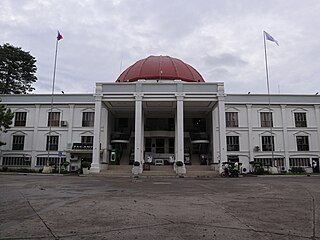
Kidapawan, officially the City of Kidapawan, is a 3rd class component city and capital of the province of Cotabato, Philippines. According to the 2020 Census, it has a population of 160,791 people.

Midsayap, officially the Municipality of Midsayap, is a 1st class municipality in the Province of Cotabato, Philippines. According to the 2020 census, it has a population of 117,365 people.

Polomolok, officially the Municipality of Polomolok, is a 1st class municipality in the province of South Cotabato, Philippines. As of May 2020, it has a population of 172,605 people making it the most populated municipality in Mindanao.
Mindanao Association of State Tertiary Schools, Inc. is an association of public Tertiary level schools in the Mindanao region of the Philippines. It is composed of the following schools:

Philippine Rice Research Institute (PhilRice) is a government corporate entity attached to the Department of Agriculture created through Executive Order 1061 on November 5, 1985 to help develop high-yielding and cost-reducing technologies for farmers.

The Iligan Institute of Technology, commonly referred to as, is a public coeducational institution of higher learning and research university located in Iligan City, Philippines, charted in 1968 by Republic Act 5363 and integrated as the first autonomous unit of the Mindanao State University System in 1975.

Central Mindanao University is a research state university located in the heart of Mindanao Island, province of Bukidnon, Philippines. Founded in 1910, it is one of the oldest premier universities in the southern Philippines. CMU is recognized by the Commission on Higher Education (Philippines) as the Center of Excellence in the field of Agriculture, Forestry, Veterinary Medicine and Biology; and Center of Development in Mathematics, Environmental Science and Teacher Education. In 2017, CMU became the first higher education institution in Mindanao to be awarded with Institutional Accreditation by the Accrediting Agency of Chartered Colleges and Universities in the Philippines.

The Philippine Carabao Center an attached agency of the Department of Agriculture, was established at Science City of Muñoz in Nueva Ecija province in 1992 to breed and cross carabao based on high-yield Murrah buffalo in the Philippines as a multi-purpose animal that can be raised for milk, meat, hide, and draft.
Southern Luzon State University, formerly known as Southern Luzon Polytechnic College (SLPC), is the premier, state-funded higher education institution in Quezon Province in the Philippines operating by virtue of Republic Act 9395. It is composed of 11 campuses in the province of Quezon, with the main campus situated in the Municipality of Lucban.
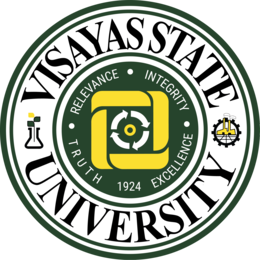
Visayas State University is a university located in the city of Baybay, province of Leyte, Philippines. The five-campus VSU has eight colleges, three institutes and one school. Located in the main campus are the College of Veterinary Medicine, College of Engineering and Technology, College of Education, College of Forestry and Environmental Science, College of Arts and Science, College of Nursing, College of Management and Economics, College of Agriculture and Food Sciences, Institute of Strategic Research and Development Studies, Institute of Tropical Ecology and Environmental Management, Institute of Human Kinetics, and the Graduate School and Special Programs.

The Tarlac Agricultural University (TAU), formerly the Tarlac College of Agriculture, is a public university in the province of Tarlac, Philippines. It is mandated to provide professional, technical and instruction for special purposes and to promote research extension services and progressive leadership in agriculture, agricultural education, home technology and other related fields. Its main campus is located in Malacampa, Camiling, Tarlac.

Sultan Kudarat State University (SKSU; Filipino: Pamantasang Pampamahalaan ng Sultan Kudarat) is a state university in the province of Sultan Kudarat, Mindanao, Philippines. Formerly Sultan Kudarat Polytechnic State College (SKPSC), it became a university in 2010. There are seven campuses within Sultan Kudarat.
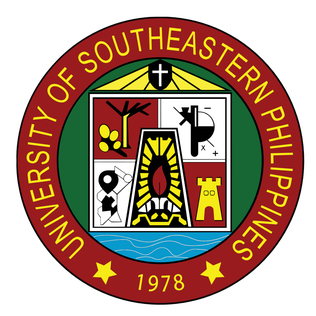
The University of Southeastern Philippines (USeP); Cebuano: Kinatumhaan sa Habagatan Sidlakang Pilipinas, Filipino: Pamantasan ng Timog-Silangang Pilipinas) is a public, research, coeducational, regional state university based in Davao City, Davao del Sur, Philippines. Founded on December 15, 1978, the university is an integration of four state educational institutions: Mindanao State University-Davao, the University of the Philippines-Master of Management Program in Davao, the Davao School of Arts and Trades, and the Davao National Regional Agricultural School. It was the first state university in Davao Region.
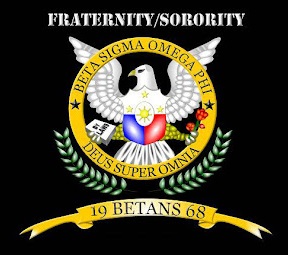
Beta Sigma Omega Phi is a service fraternity and sorority founded at University of Bohol on October 10, 1968. This was organized by Frank Paz Jr., Frederick Loor, and Remy Galbizo. Their aims were to foster lifetime brotherhood and sisterhood and to build noble leaders and better citizens. Members are encouraged to promote the welfare of students and to work for better and greater involvement in the affairs of the school as well as in the community. The organization facilitates a variety of community civic involvement, and services like tree planting, feeding programs, bloodletting, operation tuli, and lately the Brigada Eskwela. Betans 1968 have established 72 collegiate chapters throughout Philippines; most of these are on the island of Mindanao.
